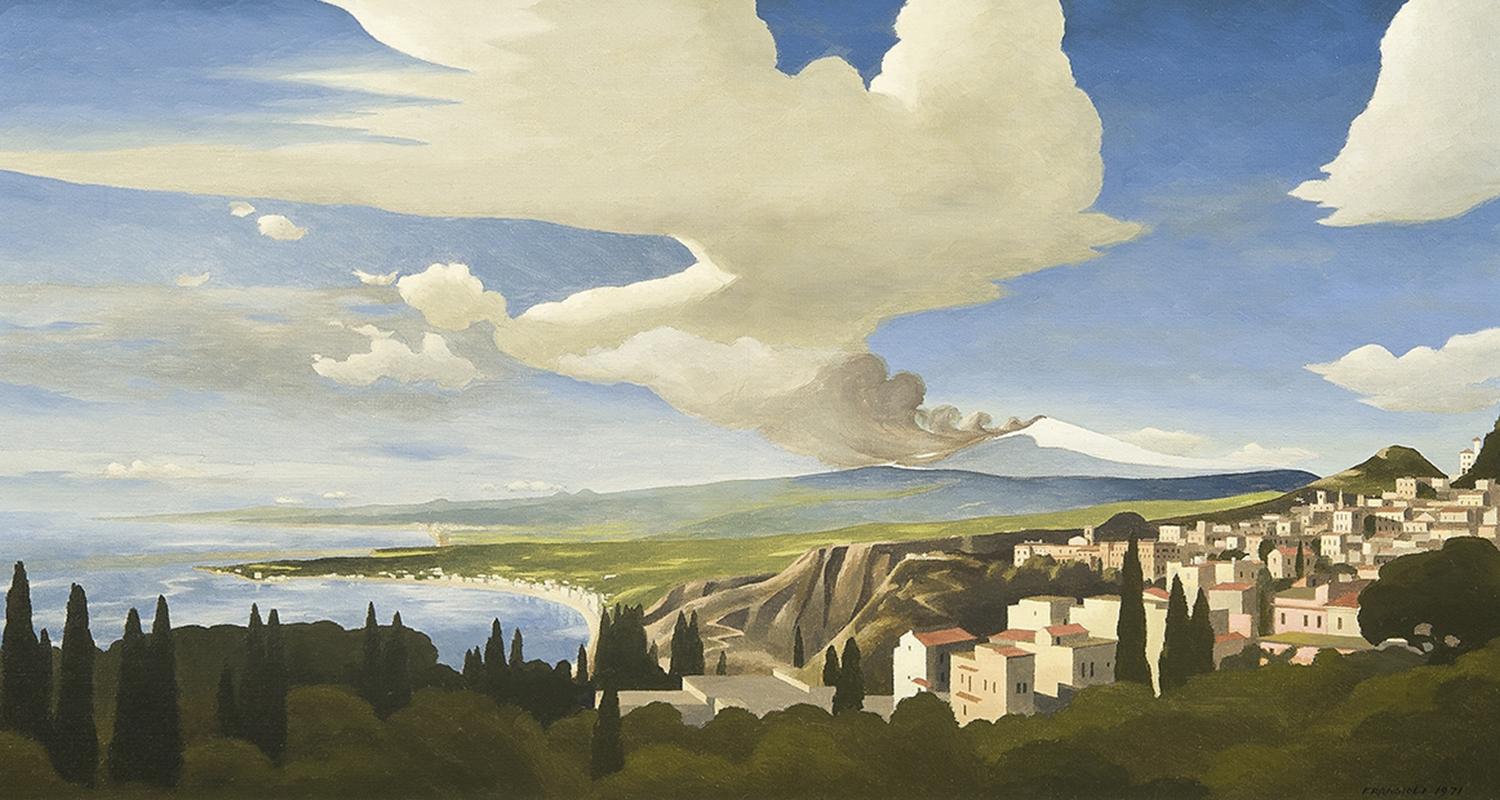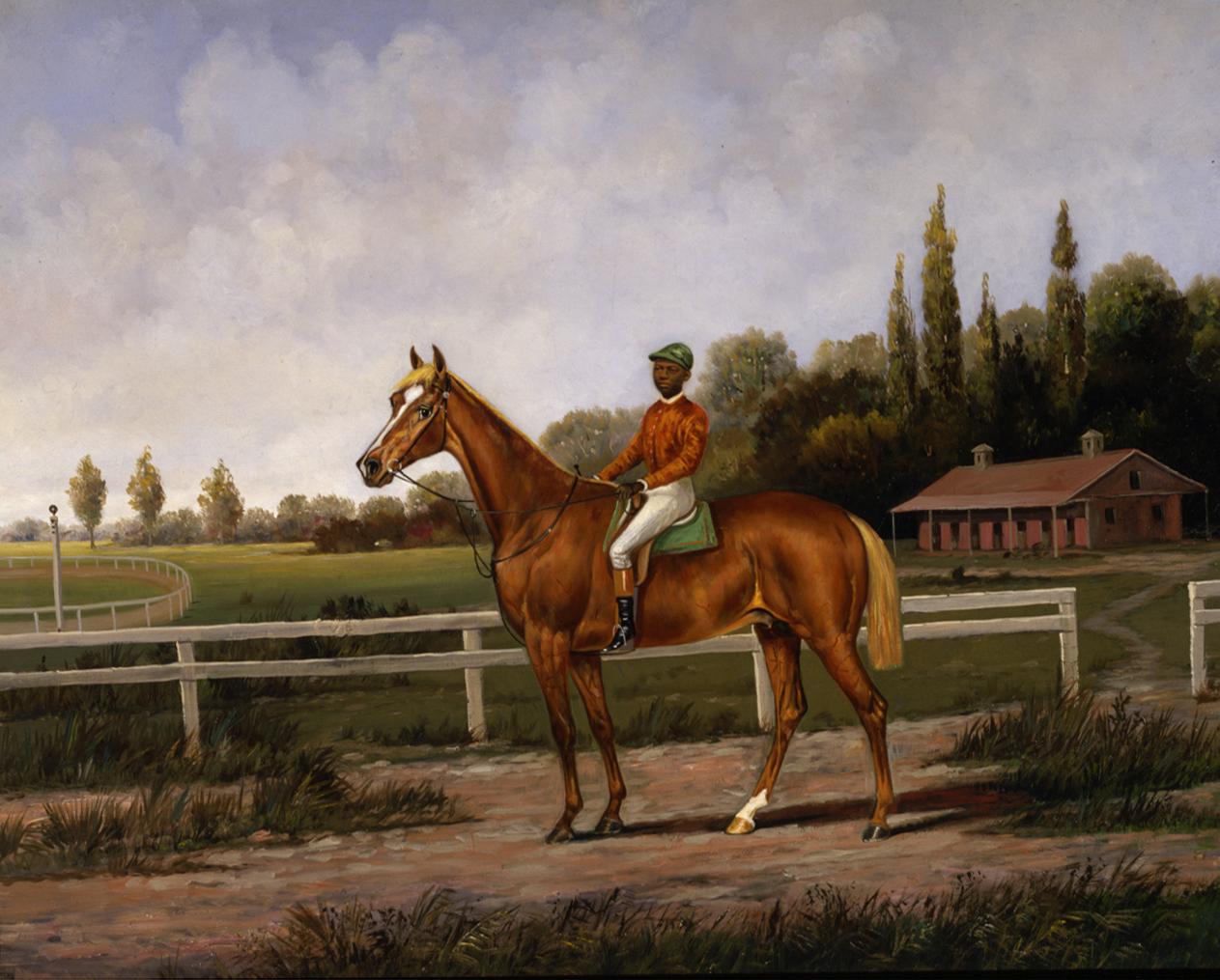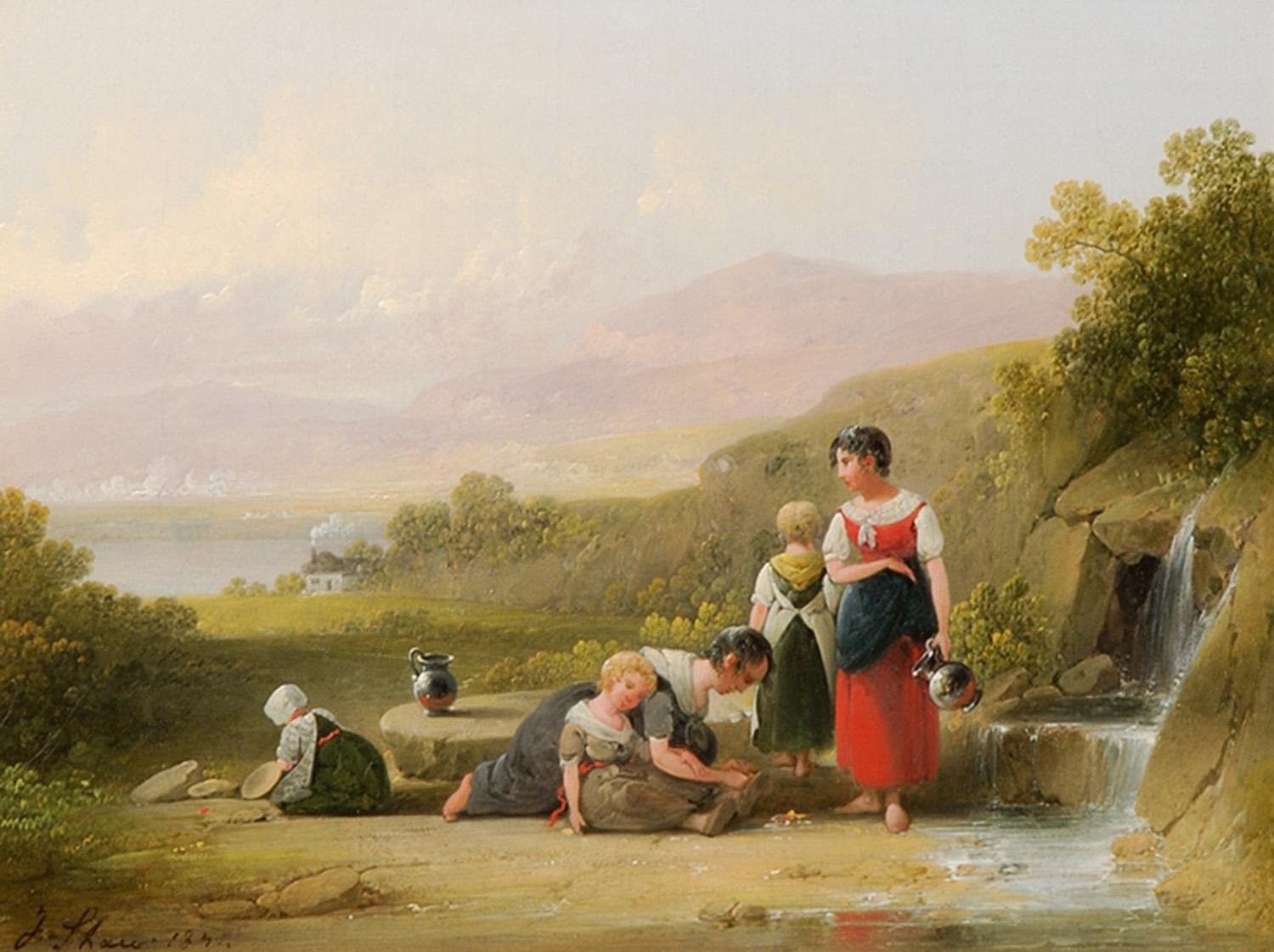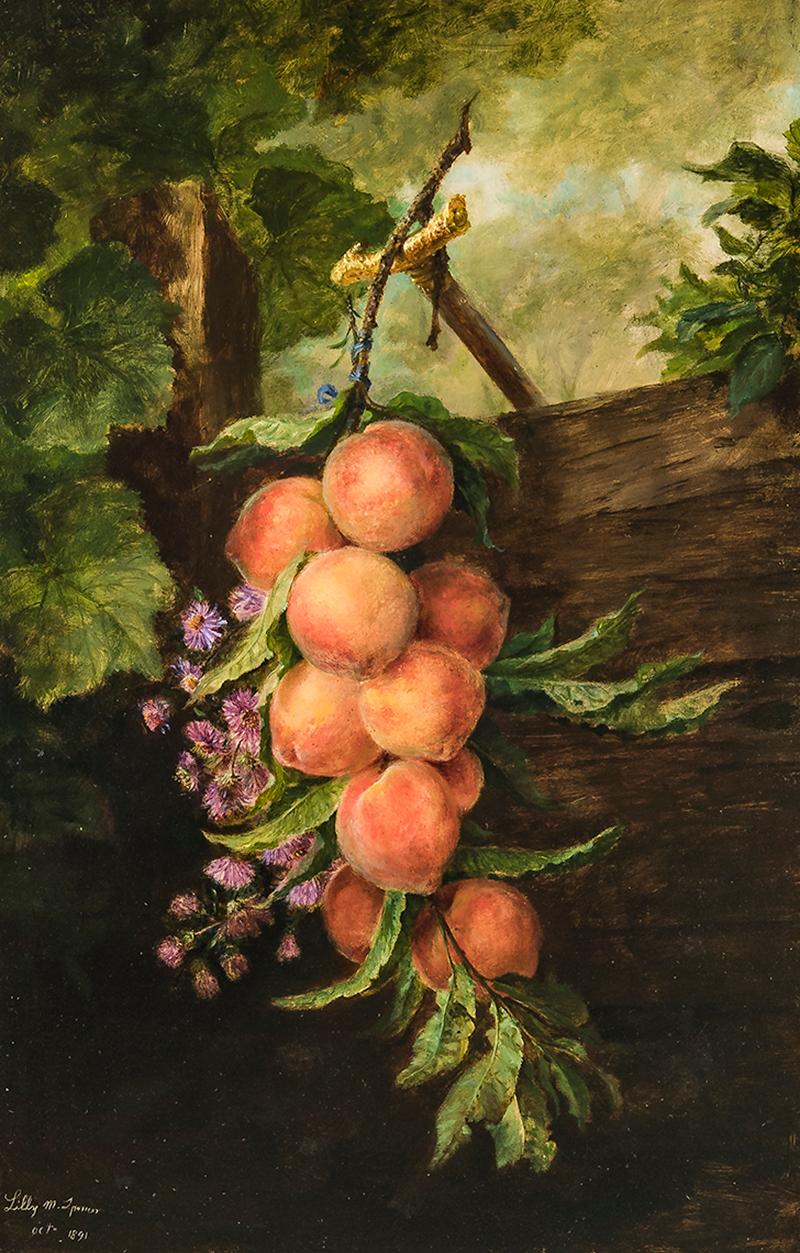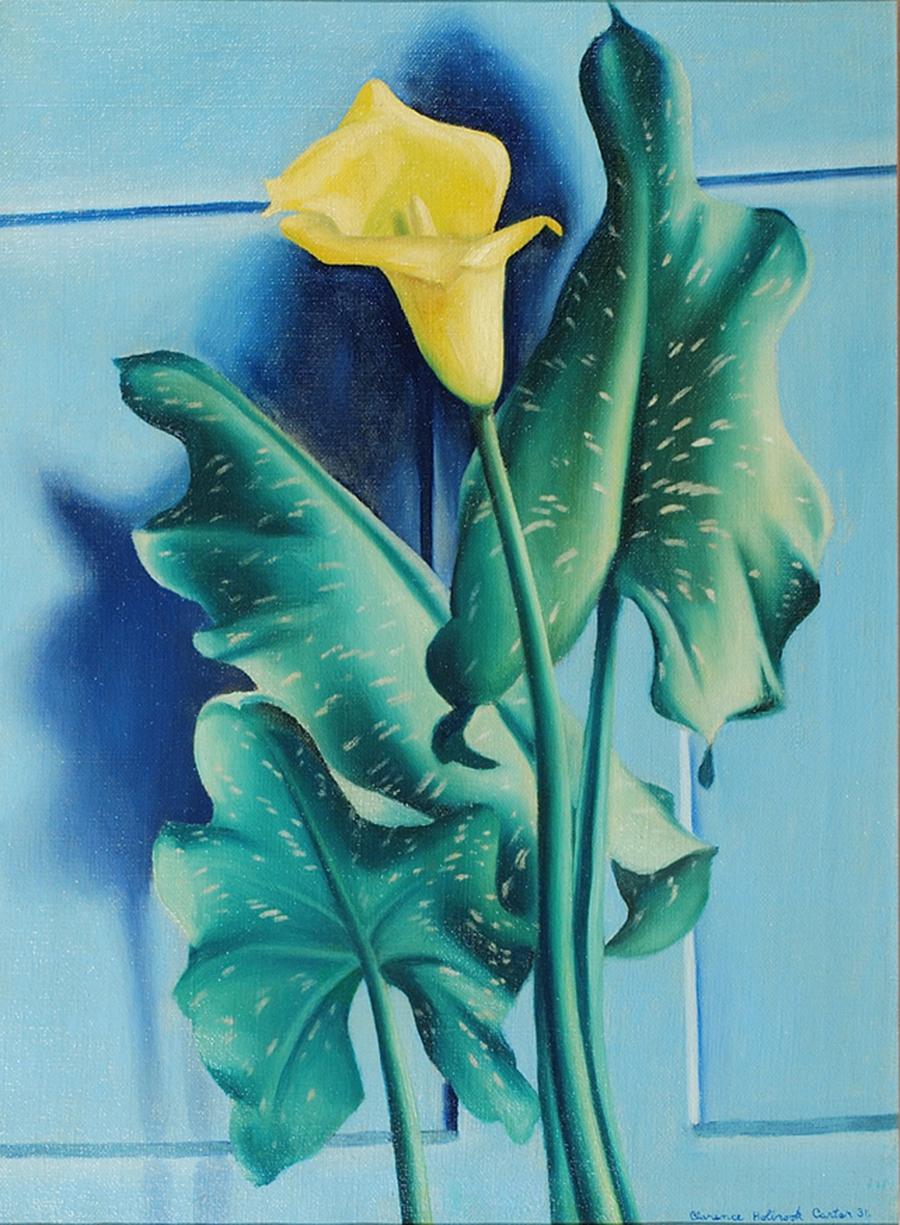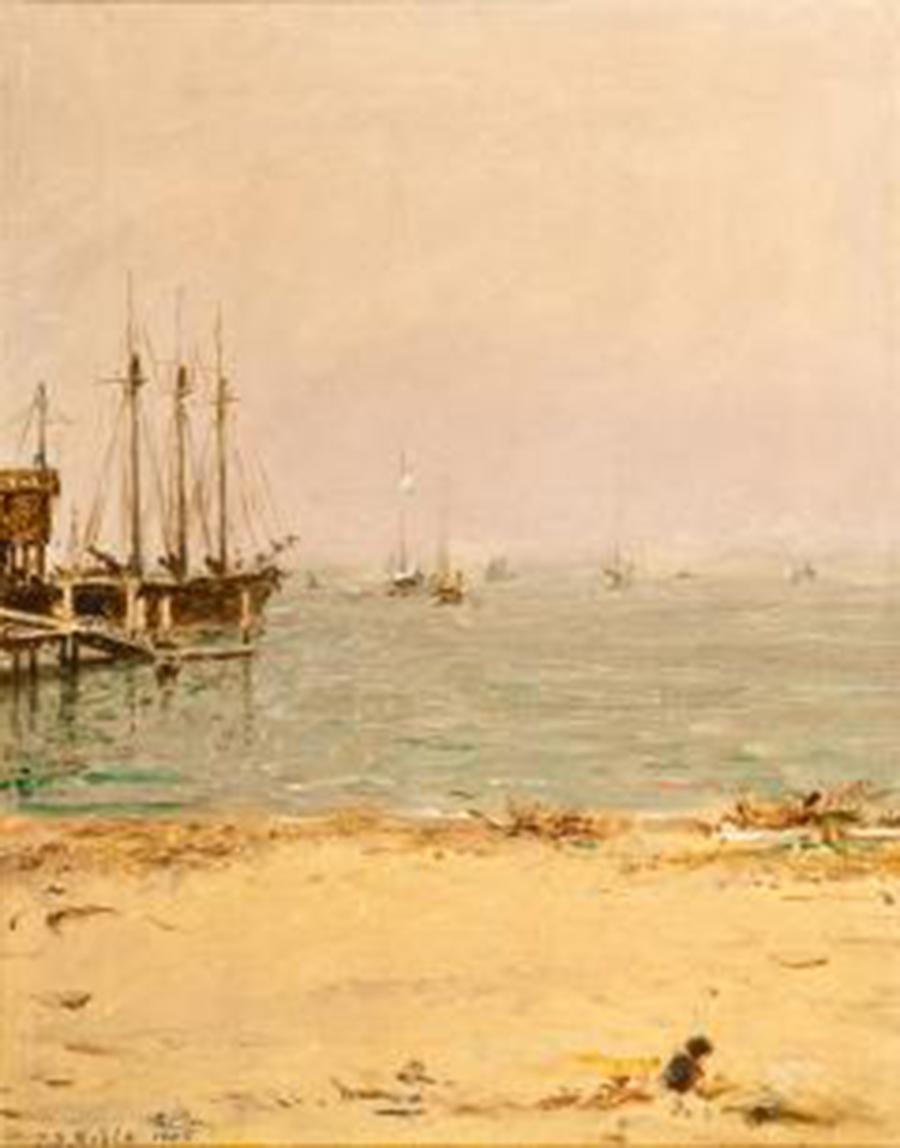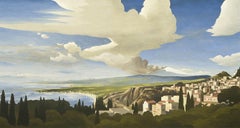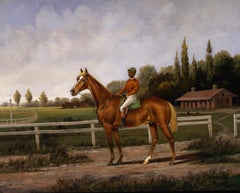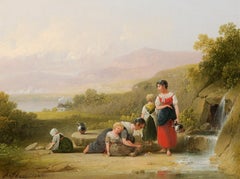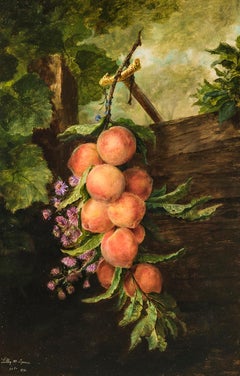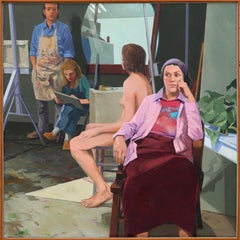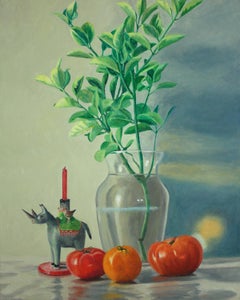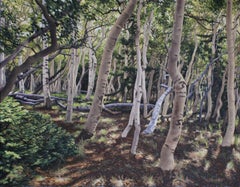Items Similar to Street Scene: "King George Dies"
Want more images or videos?
Request additional images or videos from the seller
1 of 5
Thomas FransioliStreet Scene: "King George Dies"1952
1952
About the Item
Fransioli was born in Seattle, Washington, and received a degree in architecture from the University of Pennsylvania in 1930. He worked with John Russell Pope on plans for the exhibition galleries at the National Gallery of Art in Washington, D.C., which he pinpointed as the beginning of his interest in painting. World War II interrupted a promising career in architecture. Fransioli served in the Pacific Theatre from 1943 until 1946, and was among the first American soldiers to survey Hiroshima after the atomic bomb’s detonation in August 1945. He returned to civilian life and took up painting, basing himself in Boston, but working up and down the eastern seaboard.
Thomas Fransioli’s cityscapes are crisp and tidy. Buildings stand in bold outline, their forms squarely defined by stark light and long shadows. Saturated color permeates every corner of his canvases, from vibrant oranges and greens to smoky terra cottas and granites. Even the trees that line Fransioli’s streets, parks, and squares are sharp and angular, exactly like those in an architect’s elevation rendering. But Fransioli’s cities often lack one critical feature: people. His streets are largely deserted, save for parked cars and an occasional black cat scurrying across the pavement. People make rare appearances in Fransioli’s compositions, and never does the entropy of a crowd overwhelm their prevailing sense of order and precision. People are implied in a Fransioli painting, but their physical presence would detract from the scene’s bleak and surreal beauty.
Magic Realism neatly characterizes Fransioli’s artistic viewpoint. The term was first broadly applied to contemporary American art in the 1943 Museum of Modern Art exhibition, American Realists and Magic Realists. As exhibition curator Dorothy Miller noted in her foreword to the catalogue, Magic Realism was a “widespread but not yet generally recognized trend in contemporary American art…. It is limited, in the main, to pictures of sharp focus and precise representation, whether the subject has been observed in the outer world—realism, or contrived by the imagination—magic realism.” In his introductory essay, Lincoln Kirstein took the concept a step further: “Magic realists try to convince us that extraordinary things are possible simply by painting them as if they existed.”
This is Fransioli, in a nutshell. His cityscapes exist in time and space, but certainly not in the manner in which he portrays them.
Fransioli—and other Magic Realists of his time—was also the heir to Precisionism, spawned from Cubism and Futurism after the Great War and popularized in the 1920s and early 1930s. While Fransioli may not have aspired to celebrate the Machine Age, heavy industry, and skyscrapers in the same manner as Charles Sheeler, his compositions tap into the same rigid gridwork of the urban landscape that was first codified by the Precisionists.
During the 1950s, Fransioli was represented by the progressive Margaret Brown Gallery on Newbury Street in Boston, and then later by Kennedy Galleries in New York. His work was the subject of a retrospective of about 50 pictures at the Farnsworth Museum in Rockland, Maine, in 1954. Today, Fransioli’s work can be found in the collections of the Museum of Fine Arts, Boston; the Currier Gallery, Manchester, New Hampshire; the Nelson-Atkins Gallery, Kansas City, Missouri; the Seattle Art Museum; and in a number of important private art collections.
- Creator:Thomas Fransioli (1906 - 1997, American)
- Creation Year:1952
- Dimensions:Height: 8.25 in (20.96 cm)Width: 6.25 in (15.88 cm)Depth: 1.5 in (3.81 cm)
- Medium:
- Movement & Style:
- Period:
- Condition:
- Gallery Location:New York, NY
- Reference Number:Seller: APG 8189.011stDibs: LU235996952
About the Seller
5.0
Recognized Seller
These prestigious sellers are industry leaders and represent the highest echelon for item quality and design.
Established in 1952
1stDibs seller since 2010
34 sales on 1stDibs
Typical response time: 7 hours
Associations
Art Dealers Association of America
- ShippingRetrieving quote...Shipping from: New York, NY
- Return Policy
Authenticity Guarantee
In the unlikely event there’s an issue with an item’s authenticity, contact us within 1 year for a full refund. DetailsMoney-Back Guarantee
If your item is not as described, is damaged in transit, or does not arrive, contact us within 7 days for a full refund. Details24-Hour Cancellation
You have a 24-hour grace period in which to reconsider your purchase, with no questions asked.Vetted Professional Sellers
Our world-class sellers must adhere to strict standards for service and quality, maintaining the integrity of our listings.Price-Match Guarantee
If you find that a seller listed the same item for a lower price elsewhere, we’ll match it.Trusted Global Delivery
Our best-in-class carrier network provides specialized shipping options worldwide, including custom delivery.More From This Seller
View AllMt. Etna from Taormina
By Thomas Fransioli
Located in New York, NY
Thomas Fransioli, born in 1906 in Seattle, Washington, trained as an architect at the University of Pennsylvania. He worked as an architect before his service in World War II. Largel...
Category
20th Century American Realist Landscape Paintings
Materials
Canvas, Oil
Chestnut Racehorse with a Jockey Up On a Training Strap
By Henry H. Cross
Located in New York, NY
It was Henry Cross's portraits of horses belonging to the prominent breeders and trainers of the second half of the nineteenth century that won the artist renown as an animal painter. Born and raised in upstate New York, Cross's proficiency in both drafting and caricature was revealed while he was still a student at the Binghamton Academy, New York. In 1852, when he was only fifteen years old, Cross joined a traveling circus that took him to Minneapolis, Minnesota, and to the first of many Indian encampments that he would draw upon for subject matter throughout his career. Biographers differ as to the year Cross left for Europe, however, he was in Paris from 1852 to 1853 or 1854, where he studied with Rosa Bonheur, a highly esteemed French painter of horses. Upon Cross's return to the United States he was commissioned to paint the studs of wealthy horsemen, including those of Commodore Cornelius Vanderbilt, Robert Bonner, the owner-publisher of The New York Ledger, and "Copper King" Marcus Daly, whose 18,000 acre stock farm was reputed to be the greatest and most valuable horse ranch in the world.
Although Cross received the highest pay of any equine artist of his day (up to $35,000. for one order, according to The Horse Review of April 10, 1918, p. 328), he frequently joined traveling circuses and painted the locales where they visited. He also painted portraits of notable contemporaries, such as President Abraham Lincoln, ex-president Ulysses S. Grant, King Edward VII of England, W. F. "Buffalo Bill...
Category
19th Century American Realist Animal Paintings
Materials
Canvas, Oil
At the Spring
By Joshua Shaw
Located in New York, NY
Joshua Shaw was a farmer’s son, born in Billingborough, Lincolnshire, and orphaned at the age of seven. After a boyhood of privation, he tried a number of occupations, until he finally apprenticed to a sign painter and found his métier. Shaw went to Manchester to study art, and by 1802 was in Bath, painting landscapes. In that year he began to exhibit his work at the Royal Academy in London. Essentially self-taught, Shaw achieved an impressive level of competence and versatility, producing portraits, floral compositions, still lifes, landscapes, and, cattle pieces. Shaw continued to send works for exhibition at the Royal Academy, the British Institution, and the Suffolk Street Gallery, all in London, until 1841. (Although Shaw is regularly mentioned and frequently illustrated in a host of general books on American art history, as well as included in numerous historical survey exhibitions, the only monographic study of this artist is Miriam Carroll Woods, “Joshua Shaw [1776–1860]: A Study of the Artist and his Paintings” [M.A. thesis, University of California at Los Angeles, 1971]. Apart from short biographical sketches in various dictionaries and museum collection catalogues, the two most interesting references, both contemporary, are John Sartain’s personal recollections in The Reminiscences of a Very Old Man, 1808–1897 [1899; reprint 1969] and an article in Scientific American from August 7, 1869, “Joshua Shaw, Artist and Inventor.” The article quotes extensively from an autobiographical document in the possession of Shaw’s grandson that Shaw prepared for William Dunlap...
Category
19th Century American Realist Landscape Paintings
Materials
Canvas, Oil
Still Life with Peaches
By Lilly Martin Spencer
Located in New York, NY
Lilly Martin Spencer was a professional artist for over sixty years, painting portraits, still lifes, miniatures, and genre scenes. In the 1850s to mid-1860s her genre scenes depicti...
Category
19th Century American Realist Still-life Paintings
Materials
Oil, Canvas
Yellow Calla Lily
By Clarence Holbrook Carter
Located in New York, NY
In his long and productive career, Clarence Holbrook Carter followed an independent course. He incorporated an unlikely mixture of stylistic influences, drawing from such disparate s...
Category
Early 20th Century American Realist Still-life Paintings
Materials
Oil, Canvas
View of Gravesend Bay
Located in New York, NY
Thomas Satterwhite Noble, who studied in France with Thomas Couture for three years, adapted his master’s genre style to American subjects. Born on his parents’ plantation in Kentucky in 1835, Noble was the son of a wealthy rope manufacturer. His early upbringing in Lexington, the center of that state’s slave trade in the antebellum South...
Category
Early 20th Century American Realist Landscape Paintings
Materials
Oil, Canvas
You May Also Like
In the Studio, Large Painting by John Winslow
Located in Long Island City, NY
A large (48 x 48 inch) painting of a scene in the art studio by American artist John Winslow (1938 - ).
Category
1970s American Realist Figurative Paintings
Materials
Oil, Canvas
Euonymus Branch
By Douglas Newton
Located in Brooklyn, NY
still life artist Doug newton says, "A still life painting of a branch from a shrub in our garden. The shrub is a Euonymus, a Japanese evergreen variety. At the base of the glass vase are three tomatoes and a Mexican figurine...
Category
2010s American Realist Still-life Paintings
Materials
Canvas, Oil
Blue , American Realist painter, Representational Figurative art, Portrait
Located in Houston, TX
Blue is painted in the style of American Realism. The painting is Representational Figurative art which is a time consuming process especially with portraits and figurative art.
T...
Category
2010s American Realist Portrait Paintings
Materials
Canvas, Oil
$5,200 Sale Price
20% Off
Forest Bathing , landscape oil painting, in the Realism style, Texas artist
By Garrett Middaugh
Located in Houston, TX
Aspen Grove in the Rocky Mountains depicts on of Colorado's most popular landscapes in the style of Realist painting. The artist use the natural beauty of Colorado as scenes for his Realist paintings. The artist brings us deep into the painting Forest Bathing. Almost an escape from the world.
The artist is a regional landscape painter working in oils and pastels whose subject matter varies from the mountains and desert of west Texas to the wetlands along the Texas coast...
Category
2010s American Realist Landscape Paintings
Materials
Cotton Canvas, Oil
Above Big Pine
By Willard Dixon
Located in Burlingame, CA
This American realist western landscape, "Above Big Pine", depicts a scene from the majestic Sierra Nevadas in an area above Big Pine in Inyo County from celebrated artist Willard Di...
Category
21st Century and Contemporary American Realist Landscape Paintings
Materials
Canvas, Oil
Dune Grasses (Classical Realist Oil Landscape of Beach Grasses, Gold Leaf Frame)
By Susan Hope Fogel
Located in Hudson, NY
"Dune Grasses" by Susan Hope Fogel
oil on canvas panel
9 x 12 inches, 17.5 x 21.5 x 1 inches in gold leaf frame
wire on reverse for easy installation
sign...
Category
2010s American Realist Landscape Paintings
Materials
Canvas, Oil
Recently Viewed
View AllMore Ways To Browse
Dior 1952
Art King Charles
Terra Cotta Art
George Washington Oil
Oil Painting Of George Washington
Dior Car
King Charles Painting
Main Street Modern
George C Thomas
Vintage Atomic Art
Atomic Age Art
King George Ii
Washington Square Park
Terra Cotta Paintings
Boston Cityscape Painting
Charles Russell Painting
Currier Gallery Of Art
Space Age Cat
